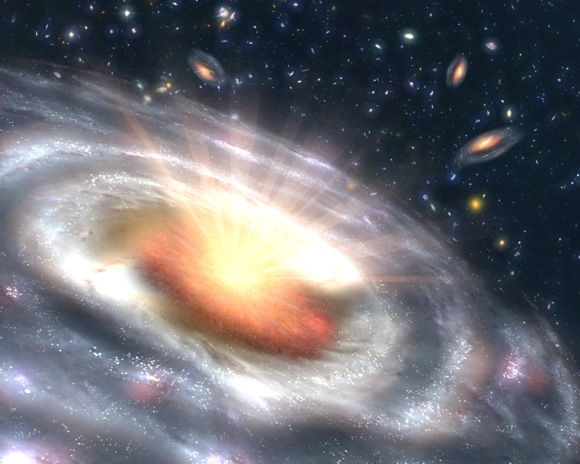A few years ago, researchers revealed that the universe is expanding at a much faster rate than originally believed — a discovery that earned a Nobel Prize in 2011. But measuring the rate of this acceleration over large distances is still challenging and problematic, says Prof. Hagai Netzer of Tel Aviv University’s School of Physics and Astronomy.
Now, Prof. Netzer, along with Jian-Min Wang, Pu Du and Chen Hu of the Institute of High Energy Physics of the Chinese Academy of Sciences and Dr. David Valls-Gabaud of the Observatoire de Paris, has developed a method with the potential to measure distances of billions of light years with a high degree of accuracy. The method uses certain types of active black holes that lie at the center of many galaxies. The ability to measure very long distances translates into seeing further into the past of the universe — and being able to estimate its rate of expansion at a very young age.

Published in the journal Physical Review Letters, this system of measurement takes into account the radiation emitted from the material that surrounds black holes before it is absorbed. As material is drawn into a black hole, it heats up and emits a huge amount of radiation, up to a thousand times the energy produced by a large galaxy containing 100 billion stars. For this reason, it can be seen from very far distances, explains Prof. Netzer.
Solving for unknown distances
Using radiation to measure distances is a general method in astronomy, but until now black holes have never been used to help measure these distances. By adding together measurements of the amount of energy being emitted from the vicinity of the black hole to the amount of radiation which reaches Earth, it’s possible to infer the distance to the black hole itself and the time in the history of the universe when the energy was emitted.
Getting an accurate estimate of the radiation being emitted depends on the properties of the black hole. For the specific type of black holes targeted in this work, the amount of radiation emitted as the object draws matter into itself is actually proportional to its mass, say the researchers. Therefore, long-established methods to measure this mass can be used to estimate the amount of radiation involved.
The viability of this theory was proved by using the known properties of black holes in our own astronomical vicinity, “only” several hundred million light years away. Prof. Netzer believes that his system will add to the astronomer’s tool kit for measuring distances much farther away, complimenting the existing method which uses the exploding stars called supernovae.
Illuminating “Dark Energy”
According to Prof. Netzer, the ability to measure far-off distances has the potential to unravel some of the greatest mysteries of the universe, which is approximately 14 billion years old. “When we are looking into a distance of billions of light years, we are looking that far into the past,” he explains. “The light that I see today was first produced when the universe was much younger.”
One such mystery is the nature of what astronomers call “dark energy,” the most significant source of energy in the present day universe. This energy, which is manifested as some kind of “anti-gravity,” is believed to contribute towards the accelerated expansion of the universe by pushing outwards. The ultimate goal is to understand dark energy on physical grounds, answering questions such as whether this energy has been consistent throughout time and if it is likely to change in the future.











